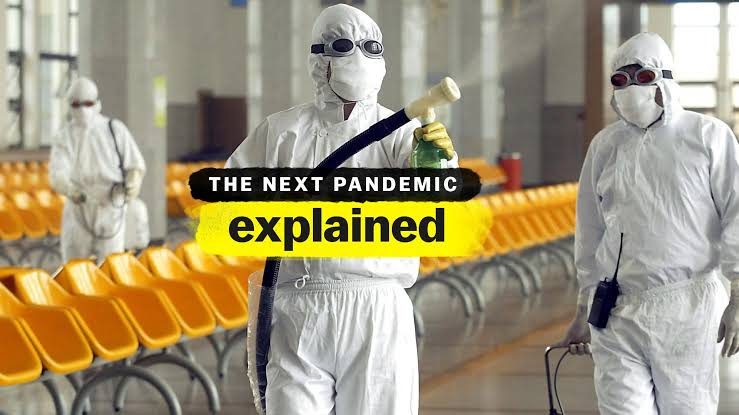Are we prepared? What we can learn from Netflix’s The Next Pandemic
As part of Vox’s Explained series, The Next Pandemic tackles the probability of another global pandemic, the science behind the world’s deadliest and most contagious viruses, and the odds of mankind in the modern day. The likelihood of another outbreak, the extent of damage, as well as probable death toll are only some of the factors we have to consider—that, and whether we’re all prepared.
Closer than you think
The strange thing about pandemics is that we’re all under the impression that it takes a science experiment gone wrong, an unknown specie surfacing the earth, or the re-emergence of a long forgotten plague.
The reality may not be so dramatic. In fact, we’ve always lived with these viruses, from birds that caused influenza, pigs with swine flu, and bats which have mostly likely brought Ebola. Wildlife had always been teeming with unknown virus that has yet to make contact with mankind, and as mankind slowly eats away what’s left with the wild, we are eventually exposed to the viruses that used to live silently within those animals.
“Out of an estimated 1.6 million unknown viruses in wildlife, we currently know of about 3000. So it’s really less than 0.1%,” says Dr. Peter Daznak, a disease ecologist from the documentary.
But that’s just the least of our worries. Upon contact with humans, some viruses are actually able to change rapidly and adapt to our immune responses, making them more contagious—or even deadly. Experts call them zoonotic virus.
“You can think of the virus in two scales: how contagious it is, and how deadly it is,” the show furthers.
Over the years, we’ve seen the likes of Severe Acute Respiratory Syndrome (SARS), which killed nearly 800 individuals and the 1918 H1N1 outbreak that took a toll on 500 million lives. Both cases were zoonotic viruses. In the case of H1N1, the combination of human and bird flu made it possible to be transmittable to humans, but impossible to cure. It was both contagious and deadly, as the virus was airborne, and there was no vaccine available at the time.
This leads us to the big question, “if we encounter the next unknown virus, will history repeat itself?”
Worst-case scenario
“The big problem with pandemic is we don’t know when it’ll come,” Bill Gates, co-chair of the Gates foundation, says, on the ever-present threat of the next pandemic. We can list down many factors that may serve as telltale signs of another outbreak, but be that as it may, we’ll always remain on the defense.
However, this does not mean that scientists will idly stand by and wait for the next pandemic to happen. As a matter of fact, countless researchers have been going around the world to track down viruses before they even spread, and stronger vaccines are being developed to this day, to prepare for the worst-case scenario.
“If a disease comes along that we haven’t seen before, typically it would take four or five years to come up with a vaccine against that disease,” Bill Gates adds. “And new technologies might shorten those times.”
Although it is evident that modern technology sometimes works against us—with advanced transportation giving diseases a faster means to spread around the world, and congested places making it easier for the disease to move around—there’s no denying that the same technology allowed us to shorten our reaction time against emerging diseases.
Currently, scientists are working on a universal flu vaccine, aiming to immunize us from “every possible flu strain for life”. While none of these vaccines are completed yet, it is safe to assume that with the combined efforts of brilliant minds all around the world, we are one step closer in realizing this dream, compared to before.
A matter of preparedness
Recently, the outbreak of a new strain of coronavirus in Wuhan, China shook the world. With hundreds of confirmed cases and escalating codeaths within a matter of days, the coronavirus, which was dubbed 2019 Novel Coronavirus or 2019-nCoV for the time being, is presently the third strain of coronavirus to exhibit severe symptoms, taking up after Middle Eastern Respiratory Syndrome (MERS) and SARS.
The 2019-nCoV is an airborne virus, which means it can be easily transmitted through water droplets in the air, and close contact with an infected individual. As of now, screening procedures are being implemented in airports all around the world, with all means of transportation being shut down in Wuhan, China. People suspected of being infected with the coronavirus are also undergoing quarantine, along with the confirmed cases.
As of press time, there are already confirmed cases across different parts of the globe, reaching Hong Kong, Macau, Japan, Nepal, Singapore, South Korea, Taiwan, Thailand, United States, Vietnam, Canada, and France as cited by The Guardian.
Meanwhile, in the Philippines, health officials have reported 11 suspicious cases in the morning of January 27. In response to this, airports all over the Philippines have tightened their security, suspending flights from Wuhan, using thermal scanners for surveillance and implementing communicable disease preparedness.
So far, there have been no confirmed cases of the virus having reached the Philippines yet, but that doesn’t mean we should let our guard down. The severity of this new coronavirus has yet to be determined, and there are currently no vaccines for 2019-nCOV. Until then, the public can only stay alert for further developments, which depends on total transparency and proper dissemination of information by the media, health officials, and governments across the world.
***
When it comes to viral outbreaks, perhaps there may be some similarities to science fiction and history, as apocalyptic dystopias have begun to look like the most horrible pandemics that mankind has encountered in the past. But the fact that we are here today means we survived what was considered “worst” before, and will continue to do so in the future.
Now, countries along World Health Organizations have been working together to strengthen pandemic preparedness, development of new vaccines, and improved public health response. We can never be sure of “what”, “when”, and “if” when it comes to viruses, but when the next pandemic does come, all that will matter is how we are capable of handling it.
Are we ready for the next pandemic? @BillGates explains how new technologies can help rapidly produce vaccines to protect us against the next threat.
Stream The Next Pandemic, Explained now on @Netflix: https://t.co/XMktti1IJT pic.twitter.com/ag2VhN90zb
— Vox (@voxdotcom) January 25, 2020
Vox’s Explained series is available on Netflix. The Next Pandemic episode is Season 2, Episode 2.





